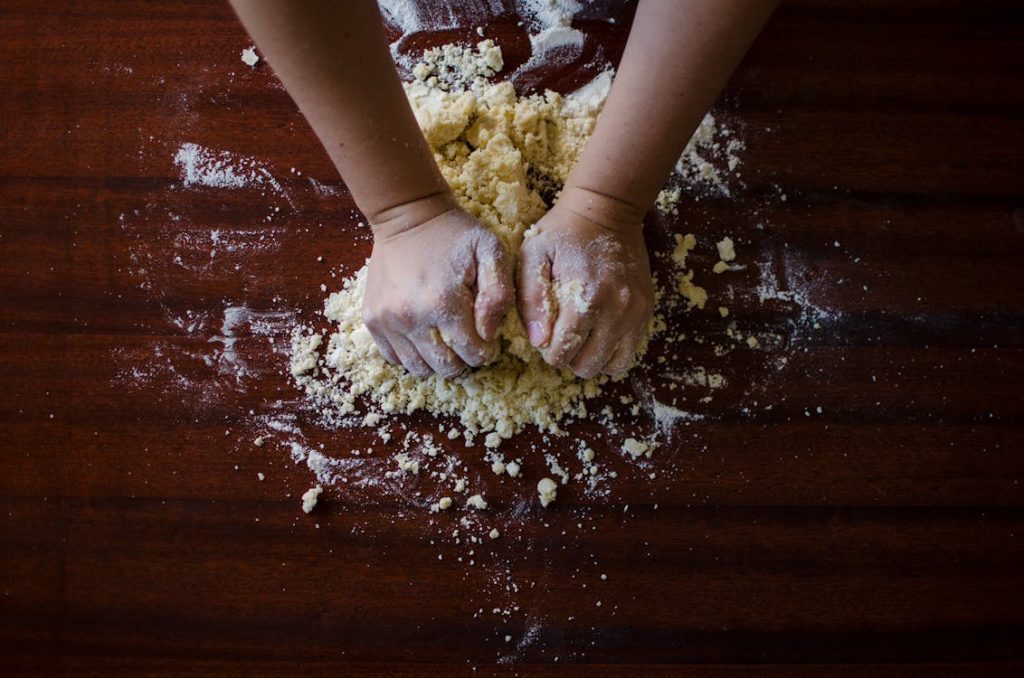All fields are required
Posted in Food Safety,Our Blog on July 17, 2024

The dangers have been known for years yet sometimes in the heat of the moment we all forget some basic rules when it comes to handling certain types of food or even when taking a test taste. We are learning more and more about the idea that we should say no to raw dough.
Something even I hadn’t thought about are the holiday ornaments that we create with kids either at home or in group settings. The dough often called “salt dough” is made with flour which is considered raw until baked. A fun activity can turn into a foodborne illness a lot faster than some people think, but there are alternatives and precautions that can be taken.
The Food and Drug Administration has posted information warning consumers to avoid eating any raw dough products because they may contain bacteria that can cause a foodborne illness. Cooking flour kills harmful bacteria such as Salmonella and E. coli. To be safe, on items like packaged cookie dough, pizza dough or biscuits, everyone should follow cooking directions on the label.
An exception to this is some raw edible dough that is made with heat-treated flour and pasteurized eggs. The label will state if it is safe to eat raw (cookie dough used in commercial ice cream is a good example). Raw flour does carry a warning on the label that consuming it raw or undercooked can increase your risk of foodborne illness. When it comes to working with flour for crafts or making foods from scratch, regardless of the brand, think of an alternative flour that is safe to eat raw (oatmeal, almond, flaxseed, or coconut). There have been four major outbreaks since 2016 linked to raw flour or cake mix, as reported by The Center for Disease Control and Prevention.
Flour comes from a grain, which is usually not treated to kill any bacteria it may have contracted. A source of bacteria may have been an animal tracking through a field and depositing animal waste, which is then harvested and ground into flour. If someone is consuming raw dough, no “kill step” has taken place (common kill-steps include boiling, baking, roasting, microwaving and frying). At this time, heat-treated flour is not available through common shopping outlets and it is not recommended to heat treat at home.
Symptoms to watch for if you have consumed raw dough products include stomach cramps, fever, vomiting or diarrhea. If you or a family member experiences any of these symptoms, contact a doctor immediately. It is very easy for anyone to become very ill or die from potential bacterial contamination from raw dough products. A person can be any age and be in good health, but the more susceptible people are those with weakened immune systems including someone very young, the elderly, someone on a particular medicine, such as a transplant recipient and pregnant women and their unborn babies.
The U.S. Food and Drug Administration suggests following these safe-handling practices to stay healthy:
Keeping your eyes peeled for recalls is a very important part of being in the kitchen as well. Knowing that your ingredients are safe to use is a priority especially when you take the time to ensure that your kitchen is prepped, clean and ready to cook or bake something delicious.
Tips from a Typical Mom gives us a great recipe to use that does not include raw flour to make things safer for children especially when the creative sparks begin to fly!
In a medium sized pot combine the cornstarch, baking soda, and water. Stir over medium heat. After a couple of minutes, the mixture will begin to thicken. When it looks like smooth, mashed potatoes, remove the pot from the heat. Spoon the ball of dough into a bowl and cover it with a damp cloth or plastic wrap until it’s cool. When it’s cool, knead it on a smooth surface (I use my silicone mat for this. I use this mat about 3 times a week while baking.) until smooth and silky. Add more cornstarch if it feels too sticky and/or sticks to the surface.
No matter how you decide to beat the heat, whether its indoors creating crafty fun with your family or outside always remember to stay safe especially when handling food. Follow Make Food Safe for more tips and food safety news.
By: Samantha Cooper